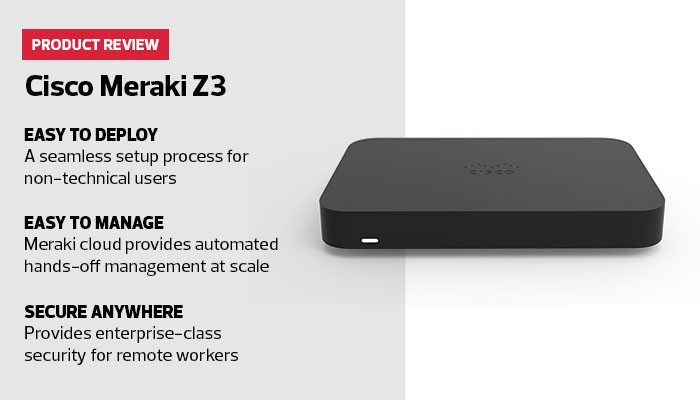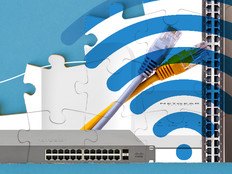Support and Setup for Cisco Meraki Z3
Setting up the Z3 is simple even for nontechnical teleworkers, though organizations may want to supplement the instructions provided in the product packaging. The device can be configured with a static IP via connection to a LAN port, or with DHCP via the WAN uplink port. In the latter configuration, the teleworker simply connects the WAN port to the router or gateway with the included cable, and then powers on the device.
When the device begins to broadcast a Meraki Setup SSID, the teleworker connects a client device to this SSID and completes the setup via the Meraki Dashboard. This allows individual device configuration when the device is deployed in an unmanaged environment.
Supporting remote teleworkers presents a unique set of challenges, and the Z3 and Meraki Cloud provide some specific tools to make it easier. For example, remote packet capture allows a network administrator to capture traffic from the device, and network administrators can send NetFlow data from the device to a NetFlow collector or network management suite. The Z3 can send alerts via email or be integrated with a log aggregator or security information and event management solution via webhooks. Most important, a suite of troubleshooting tools — including remote ping, traceroute (MTR), throughput test, and Domain Name System and Address Resolution Protocol table inspection — is available to help network engineers troubleshoot remotely.
Form Factor for the Cisco Meraki Z3
The Z3 is a small form factor device (6.83x4.41x1.04 inches) that supports up to 5 client devices. It includes a 100-megabit-per-second stateful firewall and is rated for 50Mpbs VPN throughput. Wireless capabilities include a full dual-band 802.11ac Wave 2 array with MU-MIMO and a maximum wireless data rate of 1.3Gbps. The device includes four internal dipole antennas and can support up to four SSIDs.
Wired connectivity is provided by four 1-gigabit-per-second LAN ports, one of which provides 802.3af Power over Ethernet. Wired uplink is provided via a 1Gbps WAN port, and a USB 2.0 port provides the interface for a backup cellular modem.
A Welcome Solution for Home Work
The Meraki Z3 offers organizations an effective platform for providing secure and scalable access to an increasingly remote workforce in higher education. The feature set and deployment processes are well thought out and address the challenges of deploying, maintaining and supporting the institutional network to meet most teleworkers’ needs. When coupled with the Meraki Cloud, the Z3 is a great choice to ‘send home’ with your remote workers.










